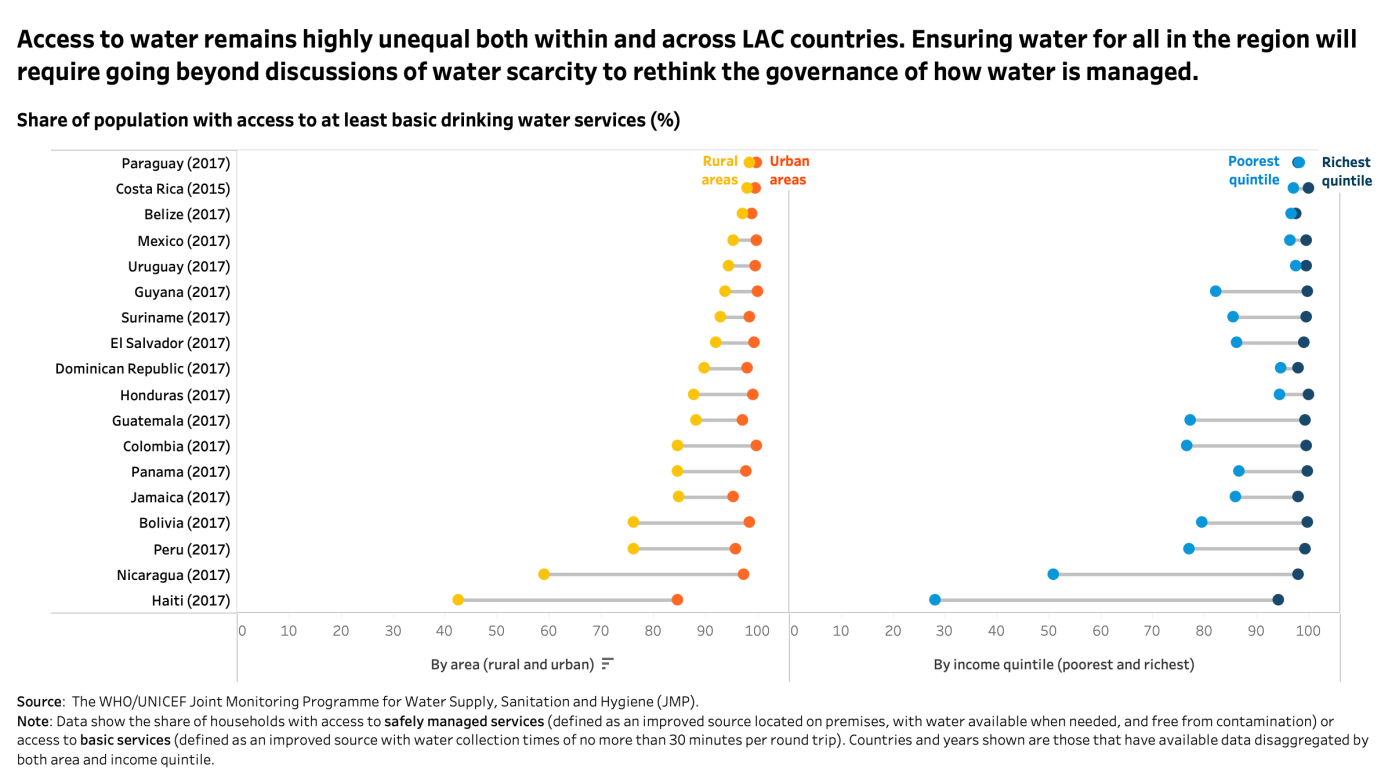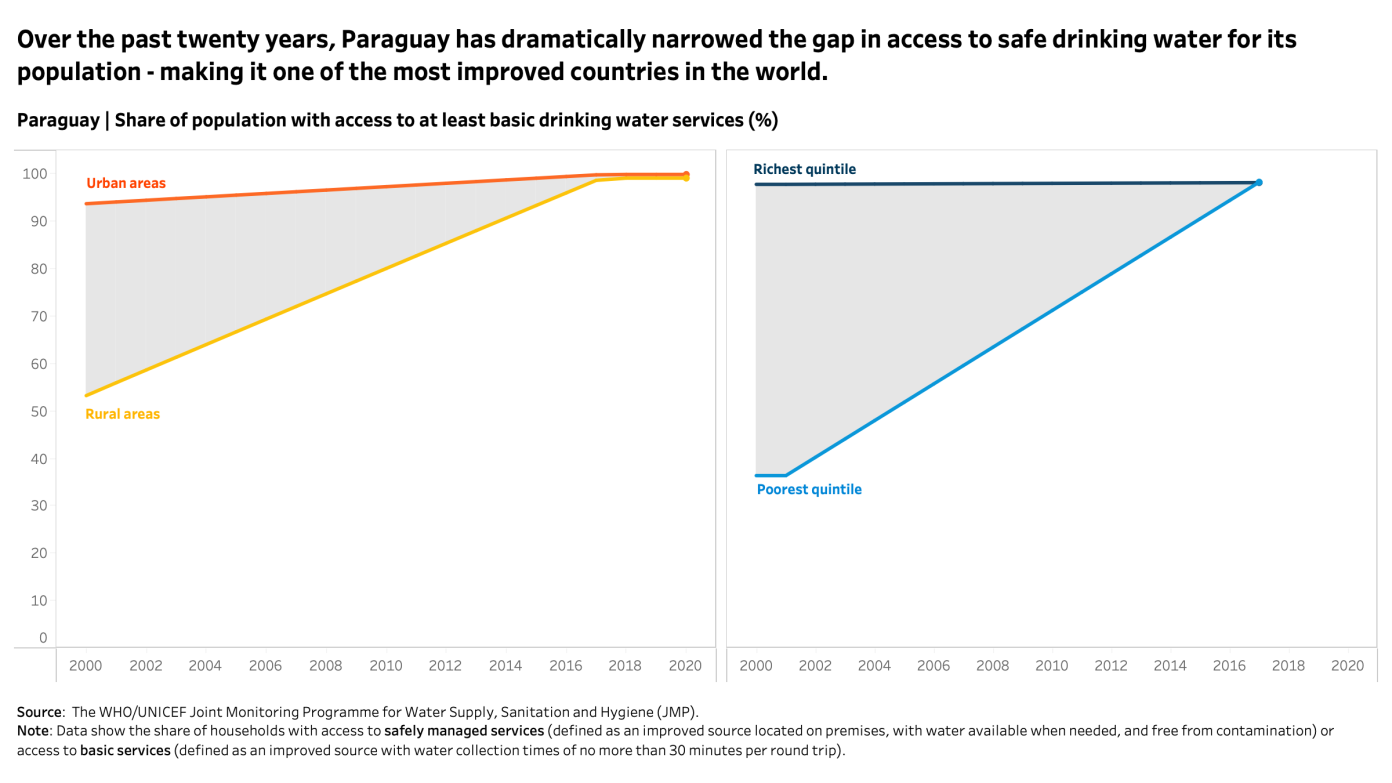Más claro que el agua: Water management and governance in Latin America and the Caribbean
May 23, 2022
While water is featured directly in SDG 6, it is actually an issue that cuts across the whole of the SDG Agenda with implications for a broad range of outcome areas including human health, agriculture, energy, business, culture, and ecosystems. However, billions of people still remain without access to this vital resource. And if we do not act now, the number of people without access to water is likely to grow in the future—as the impacts of climate change are expected to increasingly affect the availability, quality and quantity of water for basic human needs. It is estimated that by 2050 more than 50% of the world’s population will live in water-stressed areas. It is important to remember that the global water crisis of today is primarily an issue of governance rather than one of resource availability.
In LAC, as in much of the world, access to water remains highly uneven. This #GraphForThought uses data from the WHO/UNICEF Joint Monitoring Program global database to explore how these inequalities manifest across countries in the region. The left-hand panel shows how the share of people with access to at least basic drinking water services differs in rural vs urban areas, while the right-hand panel shows how this share differs for the poorest fifth vs the richest fifth of the population. Unsurprisingly, access to clean water tends to be higher in urban areas (compared to rural areas) and among the richest (compared to the poorest). However, the size of the gap in access to water between these groups varies greatly across countries. For example, while in Paraguay there is less than a 2-percentage point difference in access to water between rural/urban areas or between the richest/poorest groups, in Haiti these gaps reach a staggering 42 and 66 percentage points difference, respectively.

However, inequalities in access to water are not inevitable. Universalizing access to water is ultimately a question of governance. Water is a basic service and a human right that states should provide equally to all citizens, regardless of where they live in the territory or how much they can pay for the service. Improving water management to achieve “water for all” requires considering the institutional frameworks and systems that determine who can use water, when and how.
For example, while Paraguay stands out in the region for its almost universal coverage of access to drinking water—this was not always the case. As the graph below shows, just twenty years ago access to water in the country was highly unequal. However, within two decades, the country rapidly expanded access to rural areas and to poor citizens, virtually eliminating these gaps. If we compare this increase in access with that experienced by other countries, Paraguay stands out as one of the most improved countries in the world. This change was not the result of water suddenly becoming less scarce in the country, but rather the result of intentional investments in improving the governance of water—including measures such as establishing new legal frameworks, building state capacity, and establishing new models of engagement with local communities. See, for example, how new approaches to water management succeeded in bringing water to the community of Teniente Martínez, after 40 years of its residents struggling with hardships associated with water scarcity.



 Locations
Locations